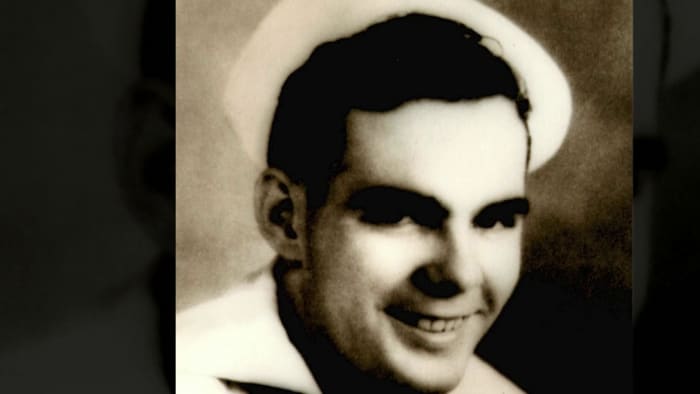SAN ANTONIO – Navy Fireman 1st Class Frank Nicoles was born and raised in Eau Claire, Wisconsin in January 1917. Nicoles lived with his grandparents and eventually enlisted in the Navy in 1940.
“He actually enlisted 82 years ago today in the Navy,” Jack Collier said. Collier is Nicoles extended family by marriage. “My wife would be Frank’s first cousin, two generations later. So basically his grandfather was a first cousin of Frank.
Just two months after enlisting, Nicoles was assigned to the battleship USS Oklahoma with his younger brother, John C. Nicoles.
“His younger brother actually joined at 17 (years old), and I guess he probably asked to be assigned to the same ship,” Collier said.
Their military career will eventually lead them to Pearl Harbor and, on December 7, 1941, an attack on the USS Oklahoma kills 429 people.
While his younger brother survived, Frank did not. Frank was only 24 years old. According to an Eau Claire newspaper article published in 1941, Frank’s grandfather received a statement informing him of his grandson’s fate.
A d
The statement said:
“After an exhaustive search, it was not possible to locate your ward, Frank Edward Nicoles, United States Navy Fireman 1st Class, and he was therefore officially declared to have lost his life in the service of his country effective December 7, 1000 nine hundred and forty-one The department sends you its most sincere condolences.
Nicoles was reported “missing in action” by the Navy Department.
His remains were interred and marked as “Unknown” at Punchbowl National Cemetery in Honolulu, Hawaii.
Generations later, Frank’s remains were identified by modern DNA analysis.
“The government actually used mitochondrial DNA, DNA from the mother’s side. My wife’s whole family is on the father’s side, so there’s two people they actually took DNA from,” Collier said.
The identification process began in 2013 under the direction of the Defense POW/MIA Accounting Agency. The remains of the 429 service members were recovered and analyzed at laboratories in Hawaii and Nebraska.
A d
According to a press release from the organizers, “the two laboratories, made up of anthropologists and forensic archaeologists, have launched the largest skeleton identification project in the world”.
Frank’s family, who live in Austin, were contacted about the positive results in 2016.
“It was a surprise to learn that he had been identified,” said Christopher Thompson. Thompson was only five months old when her cousin died. “We had long since given up on any idea of this happening, and it’s quite gratifying to bring it all together.”
His family requested that Frank’s remains be moved closer to their home.
“In 2020 we made the decision to have a funeral,” Collier said. “We waited a year and a half, almost two years to do this. The decision (to bring him to Texas) was because there was more family there.
His body finally arrived Friday at San Antonio International Airport thanks in part to the help of Mission Park Funeral Chapels and Cemeteries.
A d
“We actually went to what they call the ramp ceremony on Friday where we met the plane, and they removed the remains while keeping all the passengers on board,” Collier said. “It was very moving.”
On Monday afternoon, the sailor had a proper burial ceremony at Fort Sam Houston National Cemetery with full honors.
“I’m very happy to see him,” Thompson said.
Copyright 2022 by KSAT – All rights reserved.

